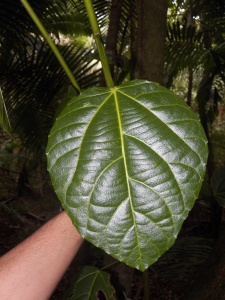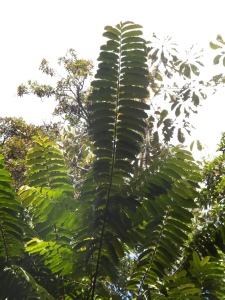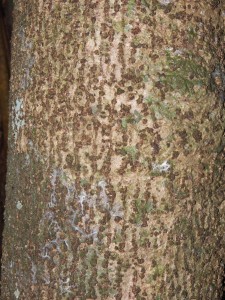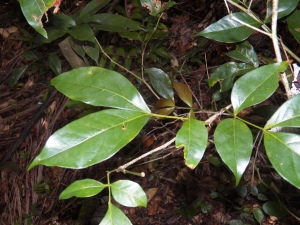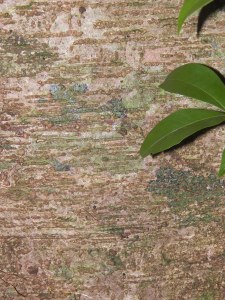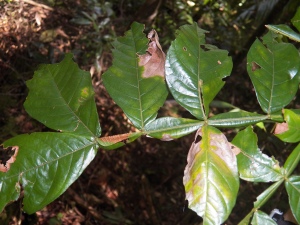Trees of Puerto Rico: Part 11 (ALCLAT, LAEPRO, and Inga)
ALCLAT, Alchornea latifolia, Achiotillo
The leaves of ALCLAT are easily distinguished from others, even in the canopy, due to their large size, heart-shape, and venation. The leaves are described as “trivenate”, having three main veins coming up from the base of the leaf. They also have a toothed leaf margin to distinguish it from similar species.
LAEPRO, Laetia procera, Cuero de Rana
The leaves of the LAEPRO are oblong and tend to come off on long branches. The leaf shape is often described as reminiscent of a sausage or perhaps a corndog, depending on how hungry we are in the field.
The bark is fairly distinctive, with lenticels forming vertical lines up the trunk on larger stems.
INGLAU, Inga laurina, Sacky Sac Bean
INGLAU is a relatively abundant tree in the grid, notable for its leaflets which come off in pairs and always have a terminal pair at the end of branches. These terminal leaflets, which have been described to me as looking like a hoof or like they are talking to one another, are clearly visible even up in the canopy. Members of the bean family, they are nitrogen-fixers, with symbiotic microbes taking valuable nitrogen from the atmosphere and converting it to usable forms for surrounding plants.
The bark on these trees is distinctive due to the presence of lenticels arranged in horizontal lines around the trunk.
INGVER, Inga vera, River Koko
INGVER is a closely-related species to INGLAU, more common in the lower-elevation parts of the Grid. The bark is similar with rows of lenticels. The leaves differ in that they have a “winged” rachis between the leaflets. This species was planted extensively on shade coffee plantations due to its nitrogen-fixing and shading abilities.
